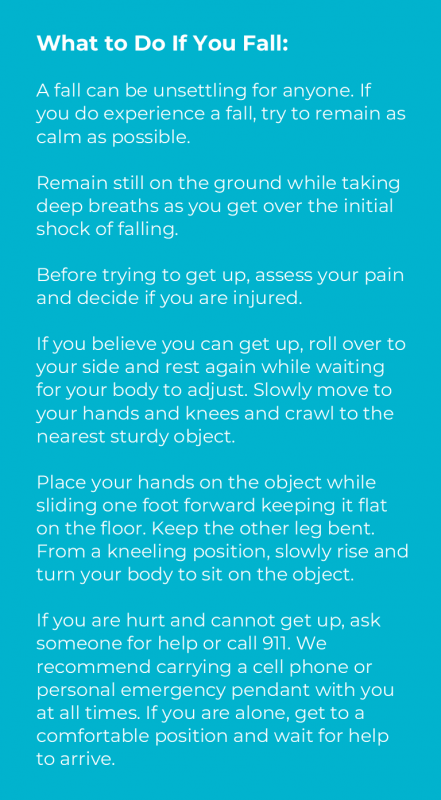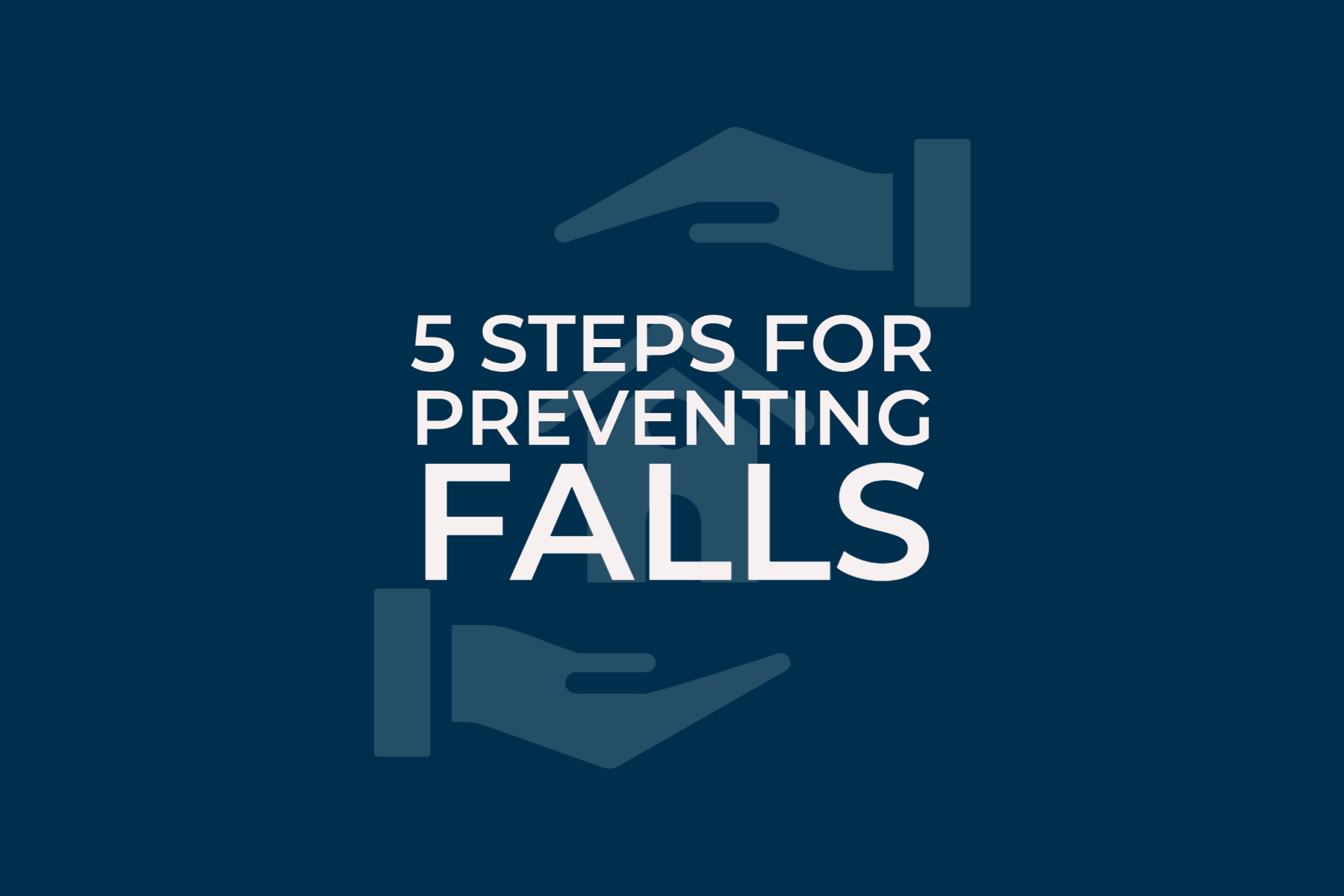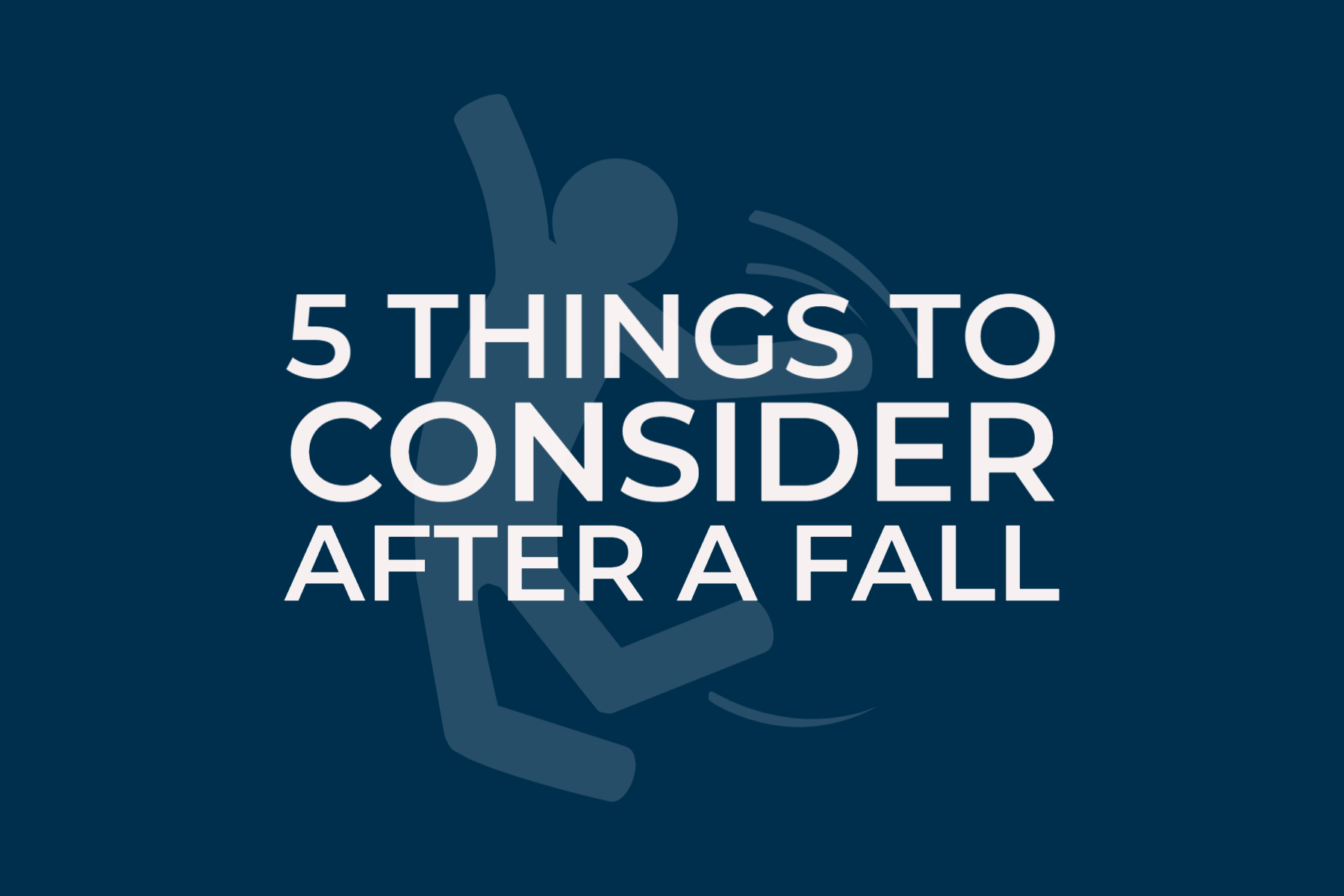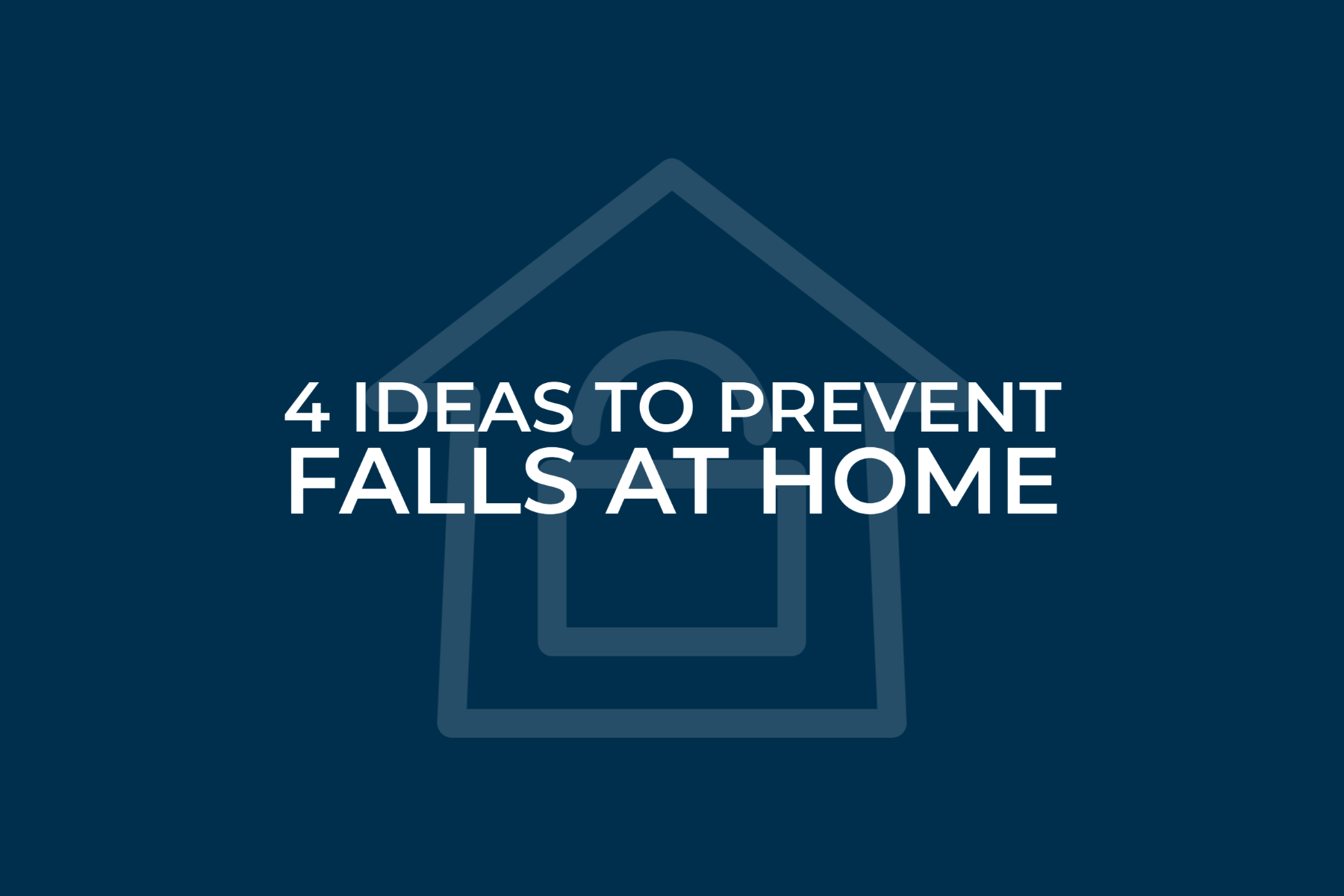THE TRUTH ABOUT FALLING
Facts about Falling:
Simple things like slipping on a rug or getting up from bed can quickly change your life. The truth is the older we get, the more prone to falling we become. For many seniors, falling becomes a rational fear that causes them to give up activities they love. Because falls can lead to stays at the hospital, serious injury, and in some cases permanent disability, it is paramount to take precautions that help to prevent falls before they happen. See more statistics about elderly falls from the Centers for Disease Control and Prevention (CDC) below:
-
- Every year, one out of four people age 65 and older experience a fall.
- One out of every five falls leads to serious injury such as broken bones or head trauma.
- Each year, 3 million seniors are treated in emergencies rooms because of falls
- More than 95% of hip fractures are caused by falling
- Falling is the most common cause of traumatic brain injuries
- In 2020, the estimated cost of falling was $67.7 billion in the United States alone
- Falling is the number one cause of death in ages over 65
- Over 30 million adults fall each year, resulting in 30,000 deaths
- Falling one time doubles your chance of falling again
Common Factors that Lead to Falling:
Many factors can cause a fall. Fortunately, many of these factors can be addressed to help prevent falls. Such factors include:

Poor Vision and Hearing Loss
A reduction in vision or hearing can lead to decensitization of surroundings, making one susceptible to tripping, slipping, and falling
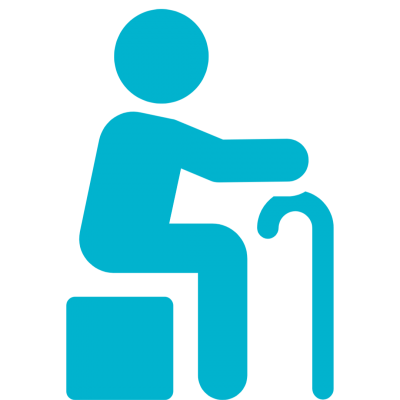
Lower Body Weakness
Lower body weakness contributes to difficulty in walking, standing, and sitting

Poor Gait or Balance
Losing gait and balance can make walking, climbing stairs, and standing from a sitting position difficult and dangerous

Use of Medications
The use of some medications, such as sedatives or antidepressants, can cause dizziness, drowsiness, and affect balance

Footwear and Foot Pain
Wearing poor footwear without proper support or suffering from chronic foot pain can make it hard to stay on your feet

Chronic Conditions or Diseases
Preexisting chronic conditions, such as diabetes, heart disease, or problems with the thyroid can affect balance

Environment Surroundings
Environment hazards, such as clutter on the floor, rugs, and furniture can cause someone to trip or slip
Keep in mind that most falls are caused by a combination of factors. To help prevent falls, it is necessary to identify all of the risk factors that are applicable and find ways to mitigate them.
SIMPLE WAYS TO PREVENT FALLS
Not all falls are preventable, but we can greatly decrease the risk of falling by doing simple things to address the risk factors.

Visit with your Doctor
- Visit with your doctor to discuss your level of risk for falling. A doctor will help identify risk factors and provide advice to address them.
- Review your medications with your doctor including learning what side effects to watch for. Include both prescription and over-the-counter medications.
- Have your eyes and hearing checked at least once a year to update your eyeglasses

Be Active and Exercise Often
- Talk to your occupational and physical therapists about appropriate exercises for your level of activity
- Focus on exercises and activities that keep your legs strong and improve your balance

Evaluate your Home for Falling Hazards
- Contact your local home medical equipment (HME) store to perform a safety evaluation of your home
- Get rid of clutter and rugs on floors that could cause trips or slips
- Add grab bars to the bathroom to assist around the toilet and in the shower
- Place bed rails on the bed to help get in and out of bed and prevent falling out of bed during the night
- Use a walker or rollator to help when walking
COMMON RESULTS OF FALLING:
Not all falls cause injuries, but that doesn’t mean it can’t happen to you. One out of five falls causes a serious injury, such as broken bones or head injuries.
-
- Over 800,000 patients a year are hospitalized because of an injury sustained from a fall, most often because of a head injury or hip fracture.
- Each year, at least 300,000 older people are hospitalized with hip fractures.
Injuries caused by falls can change a life, making it difficult to be independent and perform everyday activities. Many people who fall, even if are uninjured, become afraid of falling again. Fear can be paralyzing, forcing older adults to stop living life as they want.
When a person is less active and stops performing everyday activities, they become weaker which increases their chances of falling.
FOR MORE INFORMATION ABOUT FALLS AND FALL PREVENTION:
Centers for Disease Control and Prevention (CDC)
800-232-4636 (toll-free)
888-232-6348 (TTY/toll-free)
[email protected]
www.cdc.gov
National Falls Prevention Resource Center
571-527-3900
www.ncoa.org/center-for-healthy-aging/falls-resource-center/
